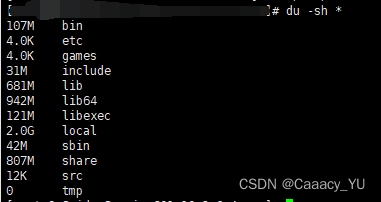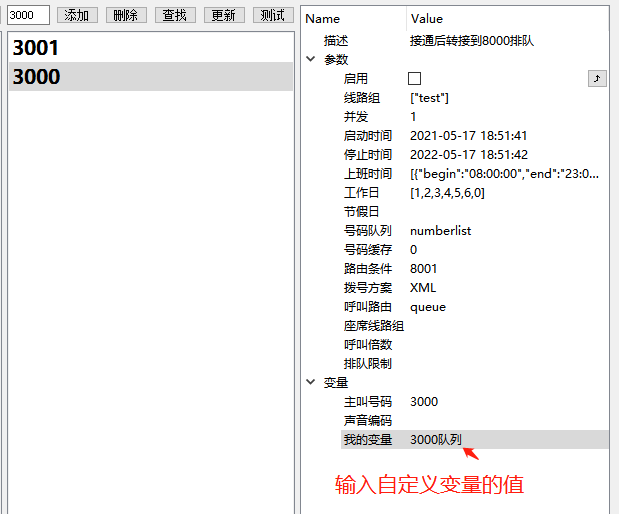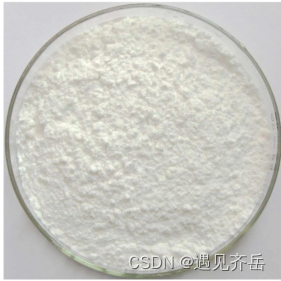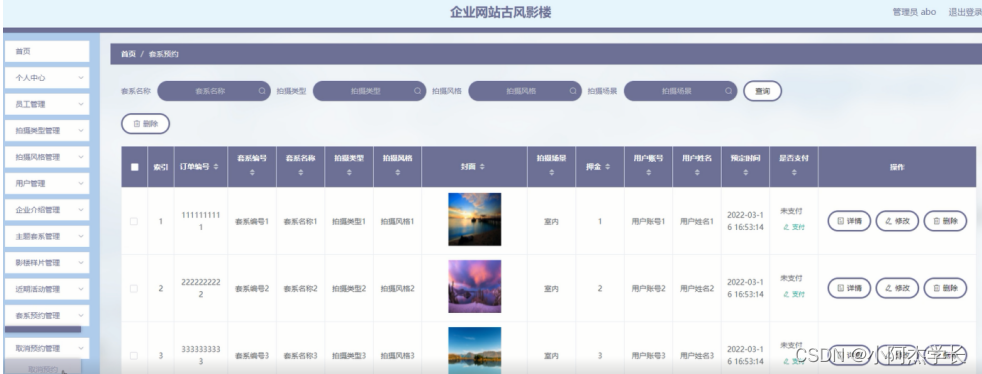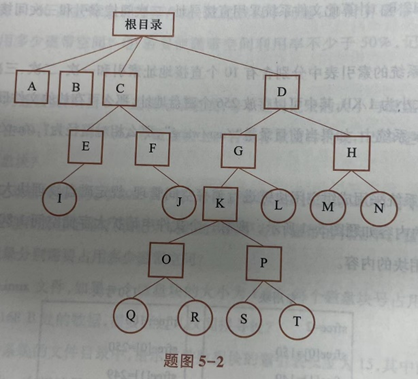目标:理解slam的框架以及它的理论知识。供以后自己查阅。
这一章主要非常重要,也是理解后续优化的基础,它是将旋转矩阵和平移向量,转化为李代数的形式进行优化,因为它有很多好处。好处如下:

意思就是采用 R , t R,t R,t的矩阵表达形式,有冗余。因为旋转向量内部的 R R R的9个变量之间有约束,不利于优化。它可以转化为可以用三个无关变量表示的,转化为无约束的能量函数。这也是下面说的李代数。
1) 李代数:
这一章需要介绍一个基本的代数结构(大学的线性代数和离散数学里面有这方面的概念介绍):群
集合:
A
A
A, 运算为
⋅
\cdot
⋅, 如果当运算满足以下性质时,称
(
A
,
⋅
)
(A, \cdot)
(A,⋅)为群。
性质:
1:封闭性:
∀
a
1
,
a
2
∈
A
,
a
1
⋅
a
2
∈
A
\forall a_1,a_2 \in A, a_1 \cdot a_2 \in A
∀a1,a2∈A,a1⋅a2∈A
2:结合律:
∀
a
1
,
a
2
,
a
3
∈
A
,
(
a
1
⋅
a
2
)
⋅
a
3
=
a
1
⋅
(
a
2
⋅
a
3
)
\forall a_1, a_2, a_3 \in A, (a_1 \cdot a_2) \cdot a_3=a_1 \cdot(a_2 \cdot a_3)
∀a1,a2,a3∈A,(a1⋅a2)⋅a3=a1⋅(a2⋅a3)
3:幺元:
∃
a
0
∈
A
,
s
.
t
.
∀
a
∈
A
,
a
0
⋅
a
=
a
⋅
a
0
=
a
\exist a_0 \in A, s.t. \space \space \forall a\in A, a_0 \cdot a=a \cdot a_0 = a
∃a0∈A,s.t. ∀a∈A,a0⋅a=a⋅a0=a
4:逆:
∀
a
∈
A
,
∃
a
−
1
∈
A
,
s
.
t
.
a
⋅
a
−
1
=
a
0
\forall a \in A, \exist a^{-1} \in A, s.t. \space \space a \cdot a^{-1}=a_0
∀a∈A,∃a−1∈A,s.t. a⋅a−1=a0
上一章节讲了旋转矩阵 R R R和平移向量 t t t,总结如下它们都满足群的性质,且是一些特殊群。是群的一部分,如下:
三维旋转矩阵构成特殊正交群 S O ( 3 ) SO(3) SO(3):
S O ( 3 ) = { R ∈ R 3 × 3 ∣ R R T = I , d e t ( R ) = 1 } ( 1 ) SO(3)= \begin{Bmatrix} \bold{R} \in R^{3\times 3} | \bold{R} \bold{R} ^T=I,det(\bold{R} )=1 \end{Bmatrix} \space \space \space \space (1) SO(3)={R∈R3×3∣RRT=I,det(R)=1} (1)
三维变换矩阵构成特殊特殊欧式群
S
E
(
3
)
=
{
T
=
[
R
t
0
T
1
]
∈
R
4
×
4
∣
R
∈
S
O
(
3
)
,
T
∈
R
3
}
(
2
)
SE(3) = \begin{Bmatrix} \bold{T} = \begin{bmatrix} \bold{R} & t \\ 0^T & 1 \end{bmatrix} \in R^{4 \times 4} | \bold{R} \in SO(3), T \in R^3 \end{Bmatrix} \space \space \space \space (2)
SE(3)={T=[R0Tt1]∈R4×4∣R∈SO(3),T∈R3} (2)
可以验证:
旋转矩阵集合和矩阵乘法构成群。
变换矩阵和矩阵乘法构成群
可以统称旋转矩阵群,和变换矩阵群。
其它常见的群。
(私下可以验证上述4个性质)
在SLAM中,
S
O
(
2
)
,
S
O
(
3
)
;
S
E
(
2
)
,
S
E
(
3
)
SO(2),SO(3); SE(2),SE(3)
SO(2),SO(3);SE(2),SE(3)非常常见的群。
群论是一门课题,一般理论数学比较多。后续介绍其中的李群
李群(Lie Group)
具有连续的性质的群。
既有群也是流形
因为刚体运动中一般为空间连续运动,可以看到
S
O
(
3
)
,
S
E
(
3
)
SO(3),SE(3)
SO(3),SE(3)都是李群(连续性)。
群中的性质,只有乘法,没有加法,这个限制了很多运算。如求导和求极限。
为了解决没有加法的问题,引出李代数的概念。
李代数:和李群对应的结构,位于向量空间。是李群单位处的正切空间。(见下图使用小写的
s
o
(
3
)
so(3)
so(3)表示)

后面介绍上述图像表示的意思为啥成立。
引出李代数:
任意的旋转矩阵
R
R
R,满足:
R
R
T
=
I
(
3
)
RR^T=I \space \space \space \space (3)
RRT=I (3)
考虑到
R
R
R随着时间的变化,有:
R
(
t
)
R
(
t
)
T
=
I
R(t)R(t)^T = I
R(t)R(t)T=I
两侧对时间求导:
R
˙
(
t
)
R
(
t
)
T
+
R
(
t
)
R
˙
(
t
)
T
=
0
=
>
R
˙
(
t
)
R
(
t
)
T
=
−
(
R
˙
(
t
)
R
(
t
)
T
)
T
(
4
)
\dot{R}(t)R(t)^T +R(t) \dot{R}(t)^T=0 \\ => \dot{R}(t)R(t)^T = -(\dot{R}(t)R(t)^T)^T \space \space \space \space (4)
R˙(t)R(t)T+R(t)R˙(t)T=0=>R˙(t)R(t)T=−(R˙(t)R(t)T)T (4)
通过上述的公式
(
4
)
(4)
(4)得到
R
˙
(
t
)
R
(
t
)
T
\dot{R}(t)R(t)^T
R˙(t)R(t)T是反对称矩阵。可以写成一个符号(
a
a
a为向量;
A
A
A是矩阵):
a
∧
=
A
=
[
0
−
a
3
a
2
a
3
0
−
a
1
−
a
2
a
1
0
]
;
A
∨
=
a
a^{\land} = A =\begin{bmatrix} 0 & -a_3 & a_2 \\ a_3 & 0 & -a_1 \\ -a_2 & a_1 & 0 \end{bmatrix}; \space \space A^{\lor}=a
a∧=A=⎣⎡0a3−a2−a30a1a2−a10⎦⎤; A∨=a
替换符号反对称矩阵(为了简便看):
R
˙
(
t
)
R
(
t
)
T
=
ϕ
∧
(
5
)
\dot{R}(t)R(t)^T=\phi^{\land} \space \space \space \space (5)
R˙(t)R(t)T=ϕ∧ (5)
将公式 ( 5 ) (5) (5)左右乘 R ( t ) R(t) R(t)可以得到如下:
R ˙ ( t ) = ϕ ∧ R ( t ) ( 6 ) \dot{R}(t)=\phi^{\land}R(t) \space \space \space \space (6) R˙(t)=ϕ∧R(t) (6)
可以看到对 R ( t ) R(t) R(t)求导其实是左乘一个反对称矩阵。
公式
(
6
)
(6)
(6)是一个非常重要的公式,也是后续计算的基础。因为有泰勒展开这个法宝。假设在
t
0
t_0
t0时刻泰勒展开,得到如下:
R
(
t
)
=
R
(
t
0
)
+
R
˙
(
t
0
)
(
t
−
t
0
)
+
⋅
⋅
⋅
R(t)=R(t_0)+\dot{R}(t_0)(t-t_0)+ \cdot \cdot \cdot
R(t)=R(t0)+R˙(t0)(t−t0)+⋅⋅⋅
一般情况下是求得一节求导比较多,省略后面的高阶项。
R
(
t
)
=
R
(
t
0
)
+
R
˙
(
t
0
)
(
t
−
t
0
)
=
R
(
t
0
)
+
ϕ
(
t
0
)
∧
(
t
)
(
7
)
R(t)=R(t_0)+\dot{R}(t_0)(t-t_0) \\ =R(t_0)+ \phi(t_0)^{\land}(t) \space \space \space \space (7)
R(t)=R(t0)+R˙(t0)(t−t0)=R(t0)+ϕ(t0)∧(t) (7)
可以看到
ϕ
∧
\phi^{\land}
ϕ∧它就是在
R
(
t
)
R(t)
R(t)的正切空间上(见上图)。
因此在连续的空间中,
t
0
t_0
t0附近,
ϕ
\phi
ϕ不变情况下,有微分方程:
R ˙ ( t ) = ϕ ( t 0 ) ∧ R ( t ) = ϕ ( 0 ) ∧ R ( t ) ( 8 ) \dot{R}(t)=\phi(t_0)^{\land}R(t)=\phi(0)^{\land}R(t) \space \space \space \space (8) R˙(t)=ϕ(t0)∧R(t)=ϕ(0)∧R(t) (8)
如果 R ( 0 ) = I R(0)=I R(0)=I,代入到公式 ( 8 ) (8) (8),解方程得到(因为 e x p ( x ) = e x p ( x ) exp(x)=exp(x) exp(x)=exp(x),其它为常数项,很容易得到):
R ( t ) = e x p ( ϕ 0 ∧ t ) ( 9 ) R(t)=exp(\phi_0^{\land}t)\space \space \space \space (9) R(t)=exp(ϕ0∧t) (9)
上面的公式得到对于任意的 t t t,可以找到对应的关系 R R R和 ϕ \phi ϕ对应关系。这里称 ϕ \phi ϕ为李代数 s o ( 3 ) so(3) so(3)。
它也有很多性质和定义:
李代数由一个集合
V
V
V,一个数域
F
F
F和一个二元运算
[
,
]
[,]
[,]组成,同事满足下列性质,称为
(
V
,
F
,
[
,
]
)
(V,F,[,])
(V,F,[,])为李代数,即为
G
G
G。
1:封闭性:
∀
X
,
Y
∈
V
,
[
X
,
Y
]
∈
V
\forall X,Y \in V, [X,Y] \in V
∀X,Y∈V,[X,Y]∈V
2:双线性:
∀
X
,
Y
,
Z
∈
V
;
a
,
b
∈
F
\forall X,Y,Z \in V; a,b \in F
∀X,Y,Z∈V;a,b∈F,有:
[
a
X
+
b
Y
,
Z
]
=
a
[
X
,
Y
]
+
b
[
Y
,
Z
]
,
[
Z
,
a
X
+
b
Y
]
=
a
[
Z
,
X
]
+
b
[
Z
,
Y
]
[aX+bY, Z]=a[X,Y]+b[Y,Z], [Z,aX+bY]=a[Z,X]+b[Z,Y]
[aX+bY,Z]=a[X,Y]+b[Y,Z],[Z,aX+bY]=a[Z,X]+b[Z,Y]
3:自反性:
∀
X
∈
V
,
[
X
,
X
]
=
0
\forall X \in V, [X,X]=0
∀X∈V,[X,X]=0
4:雅克比等价:
∀
X
,
Y
,
Z
∈
V
,
[
X
,
[
Y
,
Z
]
]
+
[
Z
,
[
Y
,
Z
]
]
+
[
Y
,
[
Z
,
X
]
]
=
0
\forall X,Y,Z \in V, [X,[Y,Z]]+[Z,[Y,Z]]+[Y,[Z,X]]=0
∀X,Y,Z∈V,[X,[Y,Z]]+[Z,[Y,Z]]+[Y,[Z,X]]=0
其中二元运算
[
,
]
被
称
为
李
括
号
[,]被称为李括号
[,]被称为李括号
在日常的SLAM中,发现三维空间向量+差积的运算构成李代数。表示如下:
s
o
(
3
)
=
{
ϕ
∈
R
3
,
Φ
=
ϕ
∧
∈
R
3
×
3
}
(
10
)
so(3)=\begin{Bmatrix} \phi\in R^3, \Phi=\phi^{\land} \in R^{3 \times 3} \end{Bmatrix} \space \space \space \space (10)
so(3)={ϕ∈R3,Φ=ϕ∧∈R3×3} (10)
其中
Φ
=
ϕ
∧
=
[
0
−
ϕ
3
ϕ
2
ϕ
3
0
−
ϕ
1
−
ϕ
2
ϕ
1
0
]
∈
R
3
×
3
\Phi=\phi^{\land}=\begin{bmatrix} 0 & -\phi_3 & \phi_2 \\ \phi_3 & 0 & -\phi_1 \\ -\phi_2 & \phi_1 & 0 \end{bmatrix} \in R^{3 \times 3}
Φ=ϕ∧=⎣⎡0ϕ3−ϕ2−ϕ30ϕ1ϕ2−ϕ10⎦⎤∈R3×3
同理,对于李代数 s e ( 3 ) se(3) se(3):
s e ( 3 ) = { ξ = [ ρ ϕ ] ∈ R 6 , ρ ∈ R 3 , ϕ ∈ s o ( 3 ) , ξ ∧ = [ ϕ ∧ ρ 0 T 0 ] ∈ R 4 × 4 } ( 11 ) se(3)=\begin{Bmatrix} \xi = \begin{bmatrix} \rho \\ \phi \end{bmatrix} \in R^6, \rho \in R^3, \phi \in so(3), \xi ^{\land} = \begin{bmatrix} \phi^{\land} & \rho \\ 0^T & 0 \end{bmatrix} \in R^{4 \times 4} \end{Bmatrix} \space \space \space \space (11) se(3)={ξ=[ρϕ]∈R6,ρ∈R3,ϕ∈so(3),ξ∧=[ϕ∧0Tρ0]∈R4×4} (11)
其中
s
e
(
3
)
se(3)
se(3)是由三个平移分量和三个旋转分量组成。
旋转和
s
o
(
3
)
so(3)
so(3)相同
平移是一个普通的向量
这个上尖尖不再是反对称矩阵。
ξ
∧
=
[
ϕ
∧
ρ
0
T
0
]
∈
R
4
×
4
(
12
)
\xi ^{\land} = \begin{bmatrix} \phi^{\land} & \rho \\ 0^T & 0 \end{bmatrix} \in R^{4 \times 4} \space \space \space \space (12)
ξ∧=[ϕ∧0Tρ0]∈R4×4 (12)
上面的公式是基本的概念,是后续优化的基础。
下面介绍优化的formulation
2)指数映射和对数映射
指数映射反映从李代数到李群的对应关系:
R
=
e
x
p
(
ϕ
∧
)
R=exp(\phi^{\land})
R=exp(ϕ∧)
其中
ϕ
∧
\phi^{\land}
ϕ∧为一个矩阵,怎么定义矩阵的运算?直接用Taylor展开。
e
x
p
(
ϕ
∧
)
=
∑
n
=
0
∞
1
n
!
(
ϕ
∧
)
n
exp(\phi^{\land}) = \sum^{\infin}_{n=0} \frac{1}{n!}(\phi^{\land})^n
exp(ϕ∧)=n=0∑∞n!1(ϕ∧)n
需要化简上面的泰勒公式(因为
ϕ
∧
\phi^{\land}
ϕ∧是矩阵)。
利用
ϕ
\phi
ϕ向量的一些性质来处理
ϕ
∧
\phi^{\land}
ϕ∧矩阵。
分开
ϕ
\phi
ϕ向量为方向和模长:
ϕ
=
θ
a
\phi=\theta a
ϕ=θa
因为
a
a
a为单位向量,所以有以下性质:
a
∧
a
∧
=
a
a
T
−
I
(
13
)
a
∧
a
∧
a
∧
=
−
a
∧
(
14
)
a^{\land}a^{\land}=aa^T-I \space \space \space \space (13) \\ a^{\land}a^{\land}a^{\land}=-a^{\land} \space \space \space \space (14)
a∧a∧=aaT−I (13)a∧a∧a∧=−a∧ (14)
利用上述的
(
13
)
,
(
14
)
(13),(14)
(13),(14)公式化解上面的泰勒公式。
泰勒展开后得到:
e
x
p
(
ϕ
∧
)
=
e
x
p
(
θ
a
∧
)
=
∑
n
=
0
∞
1
n
!
(
θ
a
∧
)
n
=
I
+
θ
a
∧
+
1
2
!
θ
2
(
a
∧
a
∧
)
+
1
3
!
θ
3
(
a
∧
a
∧
a
∧
)
+
.
.
.
=
a
a
T
−
a
∧
a
∧
+
θ
a
∧
+
1
2
!
θ
2
(
a
∧
a
∧
)
−
1
3
!
θ
3
(
a
∧
)
+
.
.
.
=
a
a
T
+
(
θ
−
1
3
!
θ
3
+
1
5
!
θ
5
−
.
.
.
)
a
∧
−
(
1
−
1
2
!
θ
2
+
1
4
!
θ
4
−
.
.
.
)
a
∧
a
∧
=
a
∧
a
∧
+
I
+
s
i
n
θ
a
∧
−
c
o
s
θ
a
∧
a
∧
=
(
1
−
c
o
s
θ
)
a
∧
a
∧
+
I
+
s
i
n
θ
a
∧
=
c
o
s
θ
I
+
(
1
−
c
o
s
θ
)
a
a
T
+
s
i
n
θ
a
∧
(
15
)
exp(\phi^{\land})=exp(\theta a^{\land})= \sum^{\infin}_{n=0} \frac{1}{n!}(\theta a^{\land})^n \\ = I + \theta a^{\land}+\frac{1}{2!}\theta^2(a^{\land}a^{\land}) + \frac{1}{3!}\theta^3(a^{\land}a^{\land}a^{\land})+ ... \\ =aa^T - a^{\land}a^{\land} + \theta a^{\land} + \frac{1}{2!}\theta^2(a^{\land}a^{\land})-\frac{1}{3!}\theta^3(a^{\land})+... \\ =aa^T + (\theta -\frac{1}{3!}\theta^3 + \frac{1}{5!}\theta^5- ... )a^{\land} - (1-\frac{1}{2!}\theta^2+ \frac{1}{4!}\theta^4- ...) a^{\land}a^{\land} \\ =a^{\land}a^{\land} + I + sin\theta a^{\land} - cos\theta a^{\land}a^{\land} \\ = (1-cos \theta)a^{\land}a^{\land} + I + sin\theta a^{\land} \\ =cos \theta I + (1- cos \theta) aa^T +sin\theta a^{\land} \space \space \space \space (15)
exp(ϕ∧)=exp(θa∧)=n=0∑∞n!1(θa∧)n=I+θa∧+2!1θ2(a∧a∧)+3!1θ3(a∧a∧a∧)+...=aaT−a∧a∧+θa∧+2!1θ2(a∧a∧)−3!1θ3(a∧)+...=aaT+(θ−3!1θ3+5!1θ5−...)a∧−(1−2!1θ2+4!1θ4−...)a∧a∧=a∧a∧+I+sinθa∧−cosθa∧a∧=(1−cosθ)a∧a∧+I+sinθa∧=cosθI+(1−cosθ)aaT+sinθa∧ (15)
最后得到如下:
e
x
p
(
θ
a
∧
)
=
c
o
s
θ
I
+
(
1
−
c
o
s
θ
)
a
a
T
+
s
i
n
θ
a
∧
(
16
)
exp(\theta a^{\land})=cos \theta I + (1- cos \theta) aa^T +sin\theta a^{\land} \space \space \space \space (16)
exp(θa∧)=cosθI+(1−cosθ)aaT+sinθa∧ (16)
上述就是罗德里公式,可以看到
s
o
(
3
)
so(3)
so(3)的物理意义为旋转向量。
ϕ
=
I
n
(
R
)
∨
=
(
∑
n
=
0
∞
(
−
1
)
n
n
+
1
(
R
−
I
)
n
+
1
)
∨
(
17
)
\phi = In(R)^{\lor}=(\sum^{\infin}_{n=0} \frac{(-1)^n}{n+1}(R-I)^{n+1})^{\lor} \space \space \space \space (17)
ϕ=In(R)∨=(n=0∑∞n+1(−1)n(R−I)n+1)∨ (17)
上面就介绍了从 S O ( 3 ) SO(3) SO(3)到 s o ( 3 ) so(3) so(3)的对应关系。
